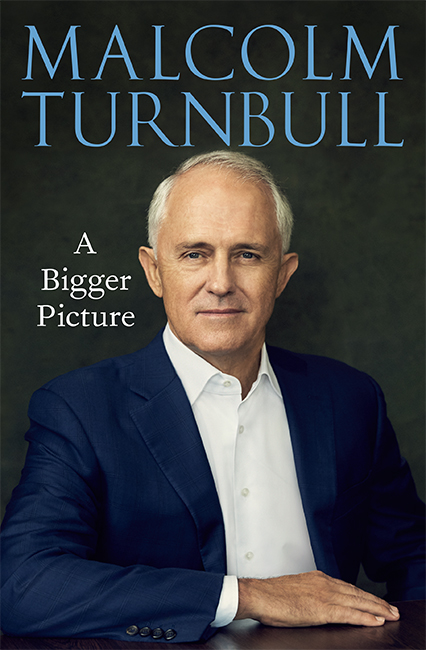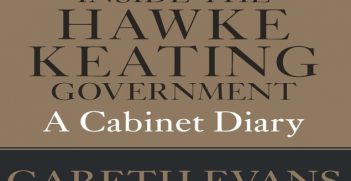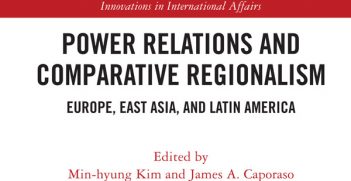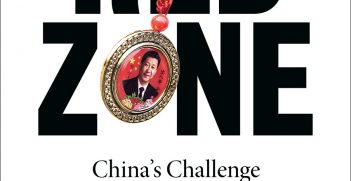Book Review: A Bigger Picture

In his early career, Malcolm Turnbull showed brilliance as a lawyer, entrepreneur, and investment banker. These should have earned him respect as a politician among his liberal peers, but he also carried into office progressive credentials for which he was relentlessly attacked by right-wing back- benchers and a conservative commentariat.
Malcolm Turnbull’s autobiography, A Bigger Picture, is a hefty tome of nearly 700 pages. It was eagerly awaited by the media and reading public, gaining additional publicity when leaked ahead of its official launch in May. The first part deals with his early life as a student, journalist, lawyer, entrepreneur, and investment banker, his relationships with his separated parents, and his enduring love for his wife, Lucy.
The bulk of the book concerns Turnbull’s political career, which began with his appointment as chair of the Australian Republican Movement in 1999. His conviction at the time was that Australians may be Elizabethans, but the majority are not Monarchists and would prefer the country to become a republic after the Queen’s reign ends, rather than have Charles as head of state. Turnbull’s republicanism was an enduring goad to Australian monarchists, not least those within the Liberal Party, like Tony Abbott.
Turnbull entered the lists as a political candidate in 2004, and won the eastern Sydney Division of Wentworth in the federal election in October of that year. His rise was rapid, becoming Howard’s minister for environment and water in 2007 and then leader of the party in 2008. His support for Kevin Rudd’s carbon pollution reduction scheme in 2009 led to his defeat as leader by Tony Abbott by a single vote. Following a black period in which he considered ending his political career, even his life, Turnbull rallied, remained in Parliament, and became Abbott’s minister for communications.
On 14 September 2015, Turnbull challenged Abbott for the leadership and won by 10 votes, becoming Australia’s 29th prime minister, a position he held for barely three years. In that time, and despite a one-seat majority in the House and a minority position in the Senate since the 2016 federal election, he achieved a number of things. In his own words, they included
the biggest personal income tax reforms in more than 20 years; reductions in company tax for small and medium businesses; legalising same-sex marriage; commencing the construction of the biggest renewable s project in Australia, Snowy Hydro2.0; committing to a rail link to Melbourne Airport; building Western Sydney Airport; keeping the Trans Pacific Partnership alive when Trump pulled out; and maintaining a refugee resettlement deal in the face of Trump’s furious rejection of it; reforms to child care and school funding; and massive investment in the capabilities of the ADF. (p. 643)
Some of these are significant, especially his pumped hydro scheme, part of his energy “trifecta” of low emissions, reliable renewables, and storage. Unfortunately it has already been undermined by Angus Taylor, Morrison’s minister for energy and emissions reduction, whose policy encompasses gas, the snake oil formula of “soil technology and carbon capture,” possible use of nuclear power, and hydrogen. Meanwhile Taylor has withdrawn commonwealth funding for solar and wind. In this writer’s opinion, the whole package is a sop to the hydrocarbons industry and climate change denialists and will do nothing to improve Australia’s already degraded international reputation as one of the biggest per capita carbon emitters in the world.
In international affairs, Turnbull is adept and agile. He developed cordial relations with numerous world leaders – Joko Widodo in Jakarta; Angela Merkel in Berlin; Trudeau, Modi, Cameron, Abe, and Erdogan at G20 summits, other leaders at the Commonwealth Heads of Government Meeting, others again at climate change conferences in Paris and Copenhagen, and with ASEAN leaders at East Asian Summits.
On his travels, Turnbull makes three assertions common to some Australian prime ministers before him. One is that his good rapport with other leaders substantively improved bilateral relations, a case in point being his friendship with Vietnamese Prime Minister Nguyen Xuan Phuc. But such bonhomie is often ephemeral, and ignores the necessary hard yards that Australian diplomats do to improve things in the background.
Second is his boast that Australia is the most successful multicultural nation in the world. This may be so, but Canada, New Zealand, and other countries might disagree. A bit of modesty might serve Australia better.
Turnbull’s third assertion is that politicians often make better diplomats than those from the “traditional diplomatic establishment” – Joe Hockey in Washington being a case in point. Maybe so in Hockey’s case, but leaving Washington and its unique Anglo environment aside, Australian professionals with language skills and long experience are usually much more effective in promoting Australian interests than most Australian politicians.
On China, Turnbull recalls his time in 1994 as a businessman when he negotiated the development of a zinc deposit at Caijiaying in Hebei Province. Then, he recalls, the Chinese were desperate to attract Australian mining technology, whereas today they are building mines and railways, bridges, tunnels, and whole cities around the world. Turnbull rejects the view that China menaces the world, and quoting Henry Kissinger, argues that China has developed an historic sense of its central place, and will be less outwardly assertive than the United States.
As prime minister, however, Turnbull became increasingly unsympathetic towards China. He endorsed the 2016 Defence White Paper and the 2017 Foreign Policy White Paper, which condemn China’s South China Sea operations and renew Australia’s engagement in the quadrilateral security dialogue to “contain” China. He banned the Chinese electronic giant Huawei from supplying equipment to Australia’s 5G mobile network, and refused to countenance Australian participation in China’s Belt and Road initiative.
Turnbull’s relations with Donald Trump were initially turbulent. Their first meeting was by phone in December 2016, during which Trump tore strips off Turnbull for brokering a deal with Obama to send asylum seekers from Manus Island and Nauru to America. Turnbull remained polite but unmoved. The deal went through. He again prevailed when Trump threatened to place quotas on Australian steel and aluminium. For the remainder of his prime ministerial term, Turnbull knew his relationship with Trump would be unpredictable, but entertained no thoughts that Australia might begin to distance itself from the American embrace. On the contrary, in response to threatening noises from Trump about North Korea, he memorably declared that Australia and the United States are “joined at the hip,” and that if hostilities begin, Australia will be in it from the start.
Turnbull recalls an increasingly wild time in Parliament towards the end of 2017 and in 2018. A surprisingly large number of members with dual nationality were held ineligible to sit in Parliament under section 44(i) of the constitution. Following Deputy Prime Minister Barnaby Joyce’s inappropriate affair with his staff member Vicki Campion, Turnbull imposed a “bonk ban” on parliamentarians having sexual relations with their staff. He was increasingly concerned about back-bencher George Christensen’s habitual trips to the Philippines to consort with prostitutes in Angeles City.
The coalition continues to govern with its one-seat majority, but the future looked increasingly hopeless. In his words,
there was an element in the Coalition, both inside the parliament and in the party membership, that would rather Shorten was prime minister than me. They wanted to recapture the leadership…and thought the best way to do this was to go into opposition. They were populist reactionaries, and like terrorists were prepared to keep up their destructive destabilisation until they got what they wanted. (p. 483)
As for Murdoch and his right-wing propagandists,
we have to ask, what good has he done apart from making himself and his family rich? His media have championed climate change denial relentlessly, and played a very influential role in the lack of climate action in our country and in the United States especially. So, after this last summer of 2019-20, his newspapers were filled with pages on the worst fires in our history facing pages mocking Greta Thunberg or anyone else concerned about climate change. (p. 483)
Surrounded by treachery, Turnbull chose not to stand at a leadership ballot on 24 August 2019, which was won by his treasurer, Scott Morrison. At least he has the satisfaction that Peter Dutton, whom he describes as lacking character, intellect, and political nous, was unsuccessful in his own bid for the leadership.
During his prime ministership, Turnbull repeatedly demonstrated his support for progressive liberal policies, yet he was still thrown out of office by enemies within the coalition, supported by the Murdoch press and an unsavoury bunch of shock jocks. These, he concludes, are little better than terrorists. It is a rancorous observation, but on absorbing the whole book, the fair-minded reader will probably agree that it contains a good deal of truth.
This is a review of Malcolm Turnbull, A Bigger Picture (Hardie Grant Books, 2020) ISBN: 9781743795637.
Richard Broinowski has degrees from Adelaide and Harvard. He is a former Australian diplomat and general manager of Radio Australia. After a stint as an adjunct professor in media studies at Canberra and Sydney Universities, he is now a writer and political commentator. His fifth book Under the Rainbow – the life and times of E W Cole, will be published by MUP (Miegunyah Press) in 2020.
This article is published under a Creative Commons Licence and may be republished with attribution.





